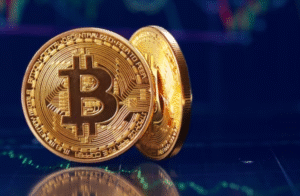$GC_F $GLD $USD
#Gold #GDP #EconomicGrowth #USMarkets #PreciousMetals #GlobalEconomy #FederalReserve #Inflation #Investing #Commodities #DollarStrength #Macroeconomics
The U.S. economy showcased resilience in the third quarter of 2023, exceeding expectations with a growth rate of 3.1%, according to the Bureau of Economic Analysis. This stronger-than-anticipated performance also marks an acceleration from the 3.0% growth noted in the second quarter. Economists had projected the final reading for Q3 GDP to match the preliminary estimate of 2.8%, but this upward revision highlights underlying economic strength amid a year filled with both inflationary pressures and monetary tightening by the Federal Reserve. The robust GDP figures arrive as the Federal Reserve continues to manage interest rates in an effort to achieve its dual mandate of price stability and maximum employment.
The unexpected uptick in economic growth bolsters confidence in the U.S. economy and has broad implications for financial markets. Notably, spot gold tested the $2,600-per-ounce level, reflecting increased investor activity in safe-haven assets. This surge in gold prices hints at a mix of market uncertainty and anticipation around upcoming economic developments, likely spurred by the Fed’s next steps in its monetary policy. Gold, traditionally sensitive to interest rate movements and the strength of the U.S. dollar, has been in demand as a hedge against inflation and as a store of value amid geopolitical concerns and volatile equity markets. The $2,600/oz test is a significant psychological threshold that may attract additional attention from both institutional and retail investors.
The stronger-than-expected GDP data also impacted currency and bond markets. The U.S. dollar saw immediate strength against major global currencies following the report, as robust economic growth supports the case for a higher-for-longer interest rate environment. However, this could pose challenges for emerging markets, which often see capital outflows amid a rising dollar. Meanwhile, yields on U.S. Treasury bonds edged higher, signaling investor expectations of sustained economic momentum. Despite optimism around the U.S. economy’s resilience, concerns remain about potential overheating, which could prolong rate hikes and strain consumer spending power over the longer term.
Market analysts now turn their attention to forthcoming economic indicators, including December’s labor and inflation data, which could guide the trajectory for gold prices and Fed policy. The strength of Q3 GDP may indicate that the Federal Reserve may need to tread carefully to balance economic growth with inflation risks. Investors in both equities and commodities should monitor these developments closely, as shifts in monetary policy expectations could produce ripple effects across asset classes. In the meantime, gold’s recent surge underscores its dual role in times of both economic uncertainty and robust economic expansion.







Comments are closed.